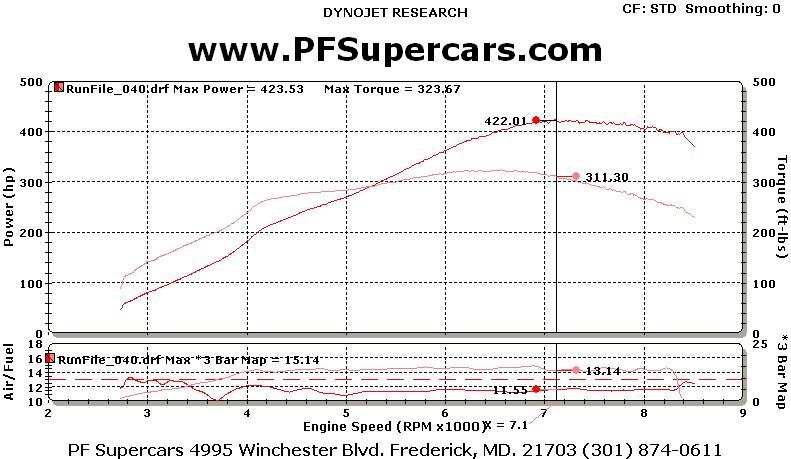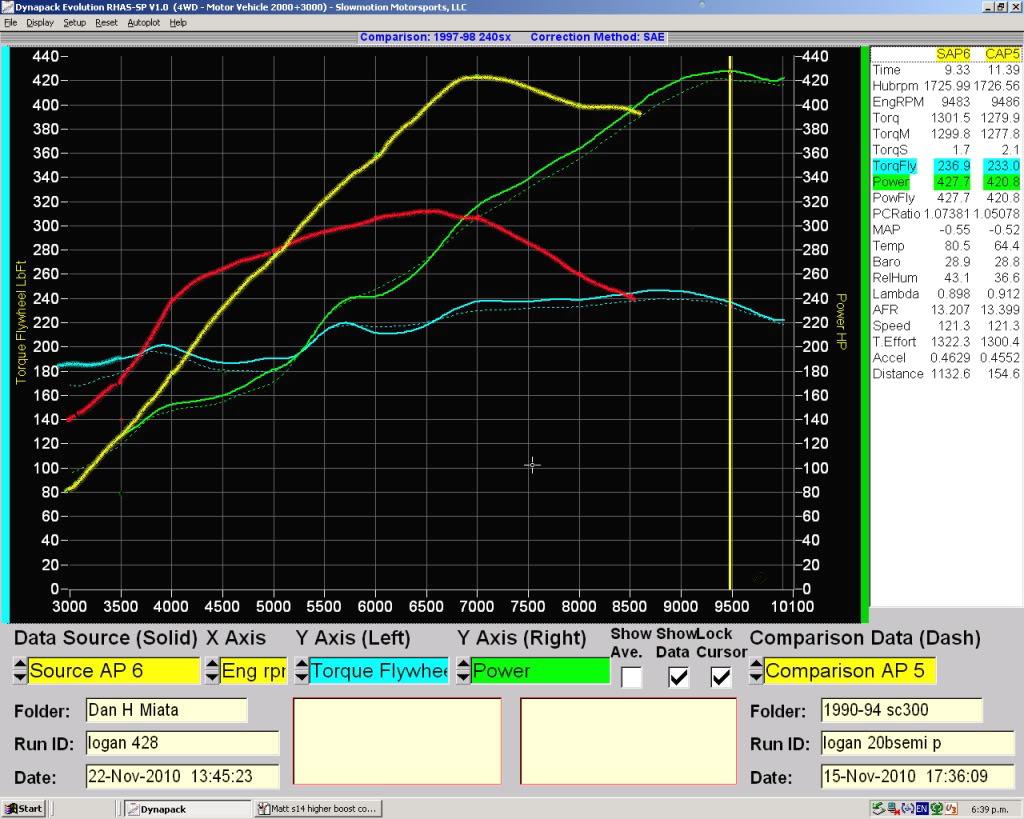You must be logged in to rate content!
2 minute(s) of a 136 minute read
1-13-2011
So I searched around and found what I consider a excellent turbo 13b dyno chart. This one is from 2008 and member imluvinit. Hope he doesnt mind ![]() Its on a dynojet which reads close to a dynapack. So I accurately drew his TQ and HP over my chart. It would have been nice if we both had started the pulls at 1500, to show the bottom end difference, but this is good enough.
Its on a dynojet which reads close to a dynapack. So I accurately drew his TQ and HP over my chart. It would have been nice if we both had started the pulls at 1500, to show the bottom end difference, but this is good enough.


Now working with and building/driving all types of rotary engines for years, I know exactly how each setup feels and performs. So lets break down the facts. The 13b in this chart is at 15 psi. Making the 13b a 5.2 liter. My 20b is a 3.9 liter. Only way for a 3.9 liter to make the same power is high rpm. More rpm doesn't mean its better. Total power is what wins. Now daily driving, n/a 20b has more power under 3500 rpm. Making fun for traffic and light to light experiences. Also easier to accelerate at any point. The power will just smoothly pull from 3500 up. On a racetrack there is no "rush" or extreme torque rise. Makes for a much more predictable engine in mid- corner. Now which engine is faster? Tough call. Going to 8.5k and shifting in the 13b will place rpm at 5,000 for second gear. 5k in the turbo 13b is 270 horsepower. The n/a 20b going to 10k and shifting will place the rpm at 7,000 for second gear. 7k is 320 horsepower. So +1 for n/a 20b. But if you look at overall power the 13b has 400rwhp for 2,000 rpm. N/a 20b has 400rwhp for 1500rpm. +1 for 13b. End answer would be it is a toss up. ![]()